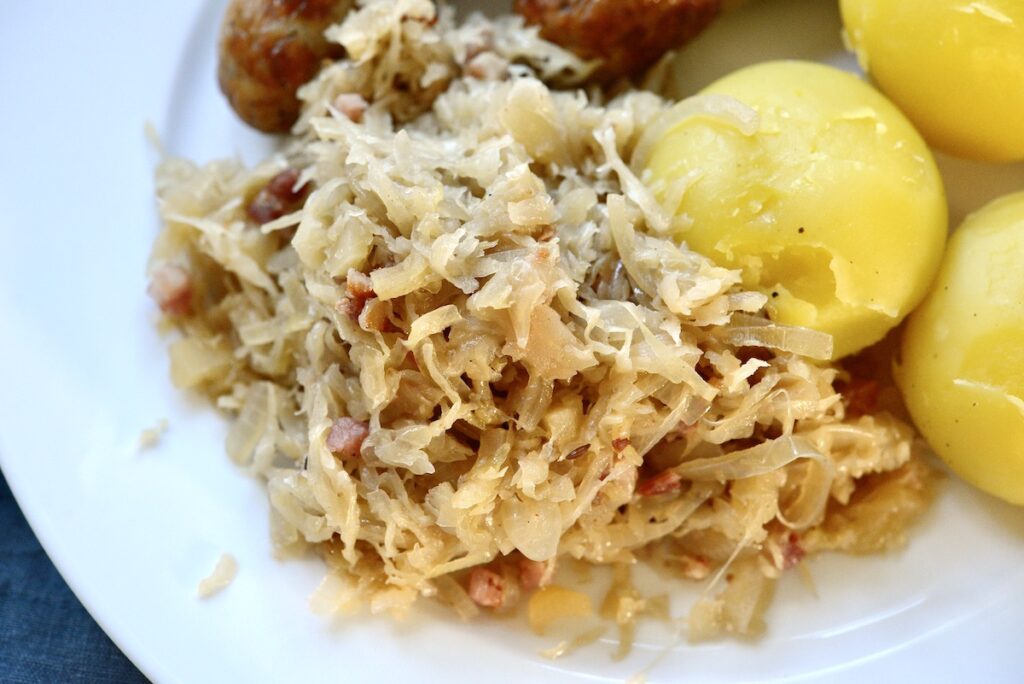
Paul Klee was not known for having a favorite food or drink, nor was he known for hosting parties or having any dietary peculiarities. By all accounts, he lived a modest life and ate modest food. So, what dishes would be commonplace at any blue collar German or Swiss establishment during the late 1800's to early 1900's? Below we provide two dishes that Klee likely encountered many times throughout his life.
Wurst and Kraut

Is there anything more German than sauerkraut (pickled and shredded cabbage) or bratwurst (a style of sausage) that comes to mind? Didn't think so. Let's put some together for dinner!
We can do this the easy way, or we can do this the hard way...
Easy Way
If you're looking for something quick, easy, and affordable, go to your local grocer and get the following items:
At home, add the kraut to a medium-sized pan and heat on medium low for 15 minutes approximately.
Preheat a skillet with a little bit of oil on medium heat, then when it's hot, add your pack of brats and a few tablespoons of water. Cover the skillet and let these cook for about 10 minutes, turning them occasionally.
Using a slotted spoon, scoop a portion of kraut and place on your plate. Using tongs, grab your brats and do the same. Put a dollop of spicy brown mustard on the side or in a small bowl to dip your sausages, and add any other breads or sides you desire!
Hard Way
If you want to try your hand at making homemade sauerkraut, follow this authentic German recipe from Anja! We recommend you not try and make your own sausages...you'll thank us later!
Bread and Cheese...Charcuterie Board!

Sounds boring, doesn't it. Well, it doesn't have to be! Let's take this opportunity to make a German-inspired charcuterie board we can share with family and friends, with items from our local grocery store.
Fun Fact: Charcuterie is a unique word to say or spell. I personally call them "shark" boards. Keep this idea in mind when Shark Week rolls around at some point during the summer.
Ingredients:
Arrangement:
How should a "shark" board be arranged? Here are some quick tips I found while scouring the web.